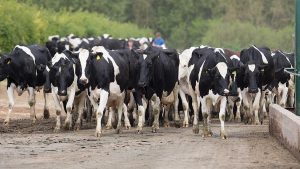
Finely balanced global milk supplies look set to match tepid demand growth in most regions hampering any major price fluctuations.
Add in the lower milk prices of recent months which have reduced global supplies in key dairy regions and a new report from Rabobank states that a demand resurgence could emerge before global milk output recovers.
“In our view, a possible whiplash effect is growing in probability,” says Lucas Fuess, senior analyst at Rabobank.

“We may see a demand resurgence emerging months before global milk output can recover.
“In the second quarter of this year, we declared that ‘it’s always darkest before the dawn.’ And although clouds remain this quarter, the storm will not last forever.”
Rabobank has lowered its 2023 forecast, with milk production from the Big 7 export regions set to grow by 0.3% year-on-year in 2023.
The downgrade from last quarter’s estimate of 0.5% is driven by reductions in most key global regions, including the US, EU, and New Zealand.
In 2024, output is expected to climb by 0.4%, which is far less than the 1.6% annual average gain experienced from 2010 to 2020.
However, as always, much depends on supply and demand in China, where the severity of the economic downturn and the duration of the lull in economic growth are reducing the likelihood of a strong demand recovery.
Leading dairy processors do report modest demand recovery but, to date, this has not been able to offset strong domestic milk production growth.
Milk production growth will slow into the second half of 2023 and into 2024, but a complete market rebalance is not expected in the near term and positive year-on-year imports are not expected until late 2024 or early 2025.
Milk production is quickly increasing toward the seasonal peak in Oceania, with a keen focus on milk solids output in New Zealand.
Mr Fuess added: “Farmers in the region are stressed following significant milk price forecast reductions from various processors, pressuring margins as production costs remain elevated.
“We are still advising the industry to watch out for El Niño’s wrath, or lack thereof, which could upend milk production in key parts of the world.”
The analyst said a meaningful departure from normal weather patterns, especially in seasonally significant regions like Oceania, could shift production expectations.
Total season output is expected to be lower, driven by the weak milk price.
























